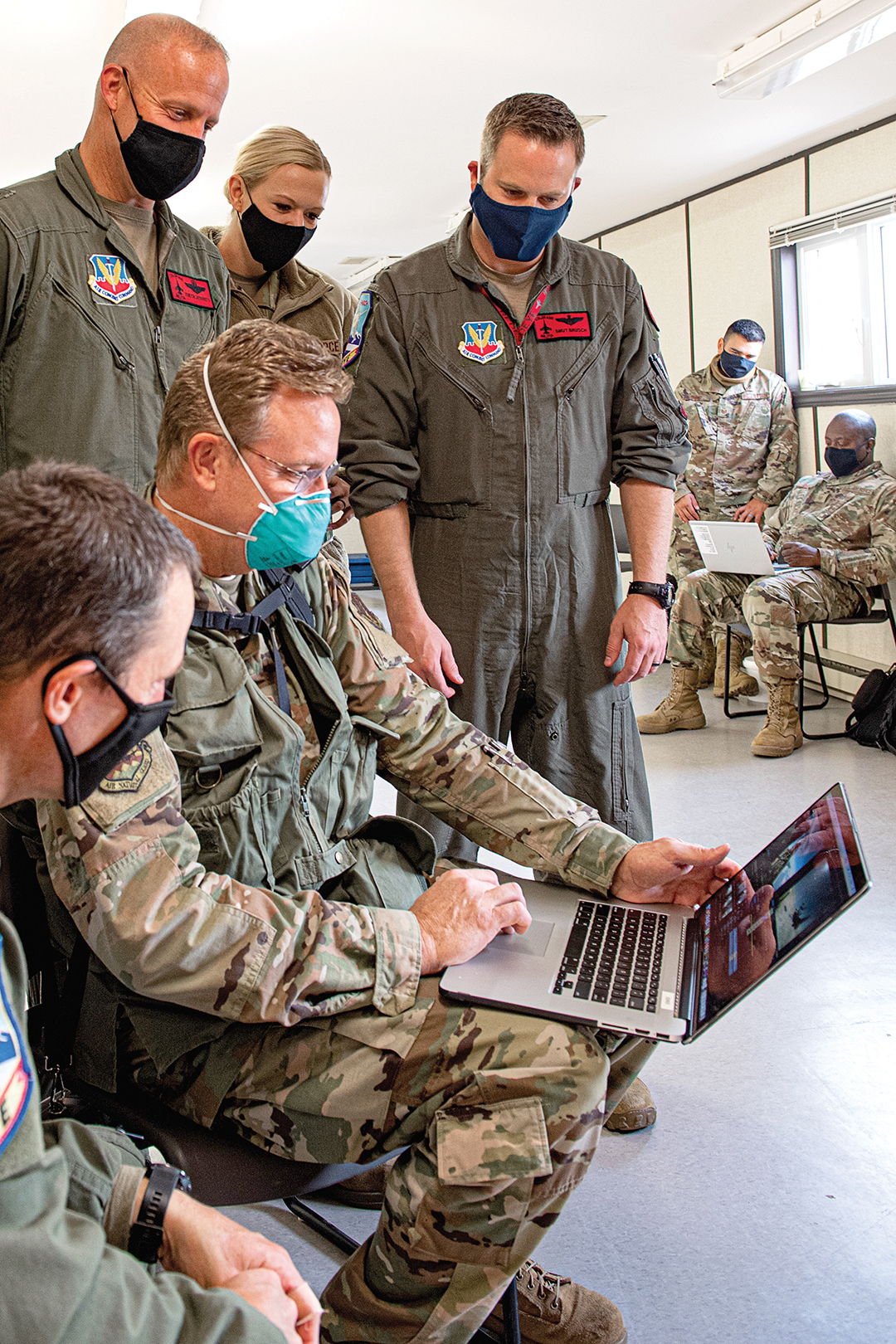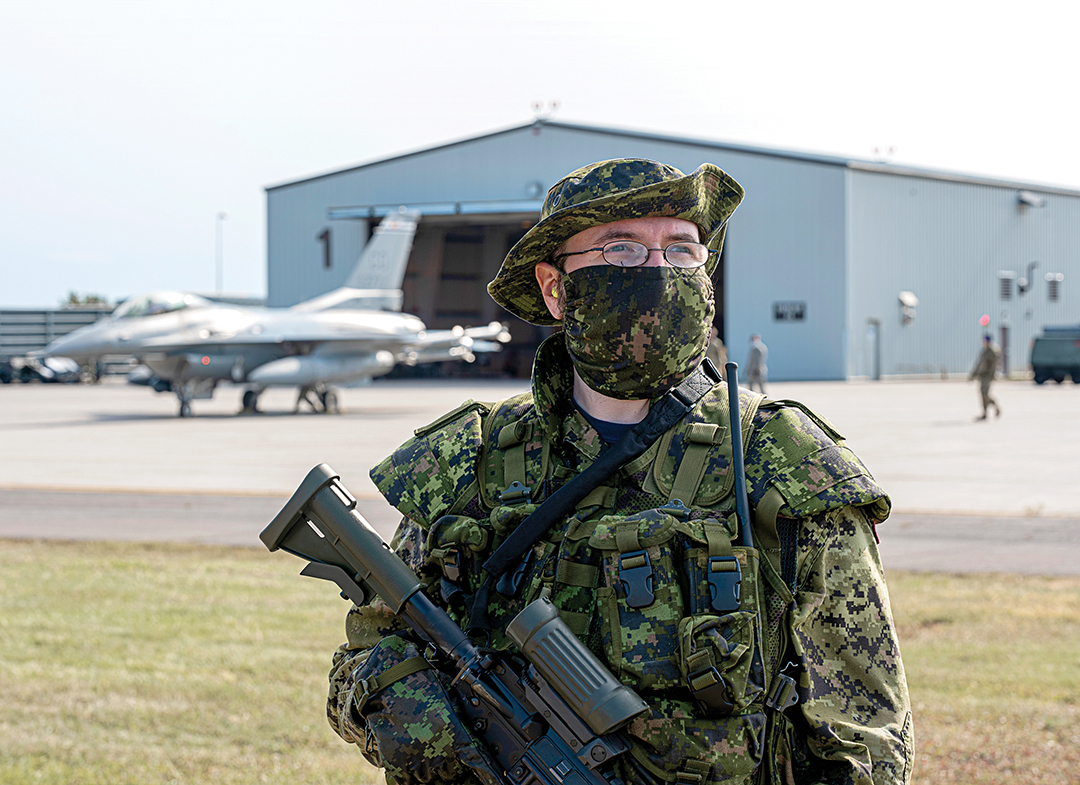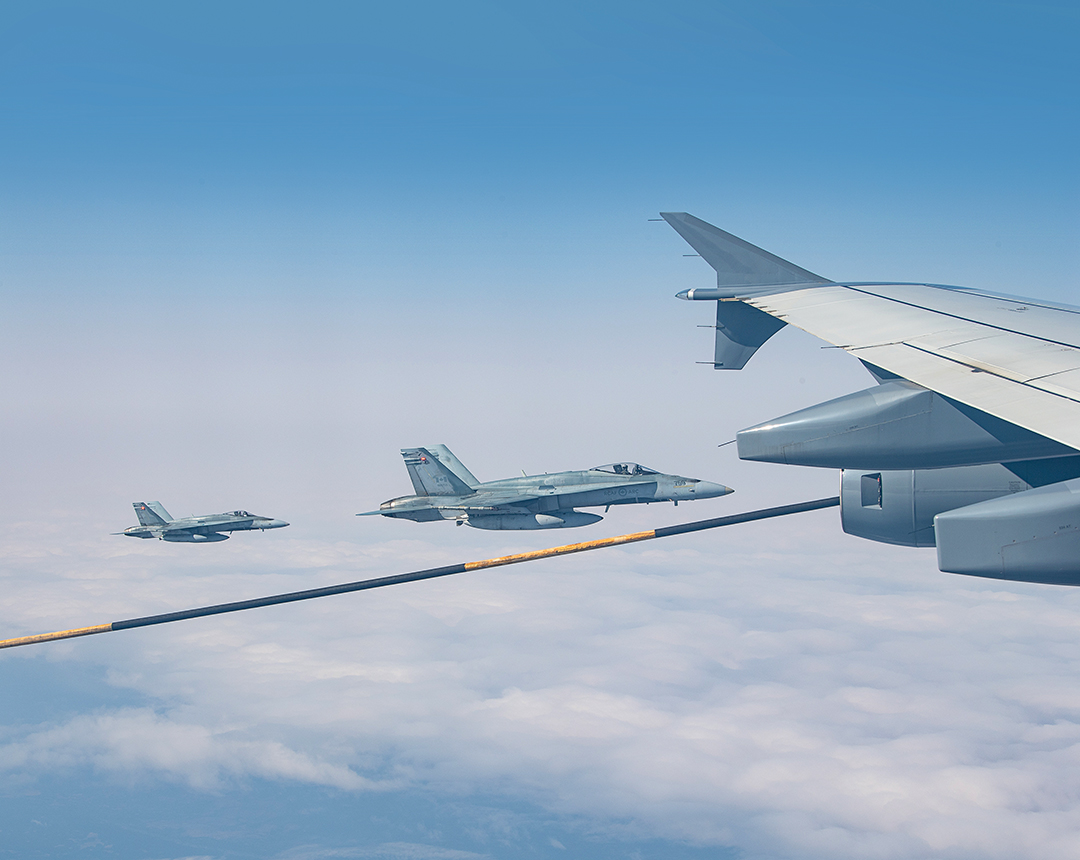NORAD hones air defenses, readiness with Arctic exercise
THE WATCH STAFF
Ongoing threats from great power competitors are placing ever-greater importance on military exercises by Canada and the United States that stress troop readiness and air defense capabilities as the mission of protecting the approaches to North America becomes increasingly complex.
The binational North American Aerospace Defense Command (NORAD) conducted Operation Noble Defender in the Arctic in September 2020 as Russian military incursions along the periphery of Canada and the U.S. persisted. “As competitors seek to bolster their presence and increase military operations in the Arctic, NORAD remains vigilant and ready to protect the sovereign airspace of Canada and the United States to detect, deter and defeat potential threats to our air and maritime approaches,” NORAD Commander Gen. Glen D. VanHerck said in a statement.
The operation spanned all three NORAD regions — Alaska, Canada and the continental U.S. F-22, CF-18 and F-16 fighter aircraft conducted air defense operations with support from an E-3 Airborne Warning and Control System (AWACS) aircraft, and KC-135 and CC-150T refueling tankers. The exercise demonstrated agile and dynamic force employment to and from critical forward-operating locations along North America’s northern approaches.

“Coordinated and partnered binational operations such as this are vital to the continued defense of North America,” said Maj. Gen. Eric Kenny, commander of the Canadian NORAD region. “This extensive operation shows the iron-clad relationship that exists within the NORAD team. We stand ready to deter and defeat threats along our approaches.”
The need to hone these capabilities came into sharp focus just two days before the exercise began. NORAD F-22 Raptors and an E-3 AWACS aircraft, which were supported by KC-135 refuelers, identified two Russian Tu-160 bombers and two Su-35 fighter aircraft that entered the Alaskan Air Defense Identification Zone (ADIZ) three times on the night of September 18, 2020.
The Russian aircraft loitered in the ADIZ for a total of about four hours, NORAD reported, and came within 50 nautical miles of Alaska’s Nunivak Island. They remained in international airspace and did not enter U.S. or Canadian sovereign airspace.
“The re-emergence of strategic competition between nations, and competitors who overtly challenge the free and open international order, characterizes our complex global security environment,” VanHerck said, according to a NORAD news release.
HARDENING THE SHIELD
NORAD employs a layered defense network of radars, satellites, and fighter and early warning aircraft to identify aircraft and determine appropriate responses. The identification and monitoring of aircraft entering the ADIZ of Canada or the U.S. demonstrates how NORAD executes its aerospace warning and control missions.
Repeated encounters with Russian aircraft near North America call for more than regular exercises to sharpen readiness. They also signal a need to upgrade NORAD’s early warning system, according to current and former NORAD leaders.

Brig. Gen. Pete M. Fesler, deputy director of operations for NORAD, and then-NORAD Commander Gen. Terrence O’Shaughnessy published a paper in September 2020 for the Wilson Center titled “Hardening the Shield: A Credible Deterrent and Capable Defense for North America.” The paper illustrates the threat of “horizontal escalation,” a tactic designed to incapacitate North American militaries before they can mobilize. Russia and the People’s Republic of China (PRC) are developing long-range conventional weapons designed to strike soft economic targets inside North America, such as ports and airports, the generals wrote.
In Russia’s case, “Tupolev bombers and ultra-quiet, nuclear-powered submarines now frequently conduct mission rehearsals for strikes on the United States and Canada” in areas beyond NORAD’s radar coverage, they warn. “This is not messaging,” the paper continues. “The Kremlin’s stealthy operations are designed specifically to remain undetected, and what good is a strategic message if it is not received?”
NORAD is developing a data-driven, machine learning system called the Strategic Homeland Integrated Ecosystem for Layered Defense (SHIELD). The system analyzes data and extrapolates it into a common operational picture, Fesler told an online forum. “It scans the data for patterns that are not visible to human eyes, helping decision-makers understand adversary potential courses of action before they are executed,” Fesler and O’Shaughnessy wrote.
CHANGING SECURITY ENVIRONMENT
Technological superiority is a must for homeland defenders who operate in an increasingly contested environment. U.S. adversaries learned from wars in which the U.S. and its allies won on the battlefield, the generals wrote, and designed strategies and systems “intended to circumvent the military strength of the West.”
“Today, the oceans that were formerly the moats that defended the arsenal of democracy have become a means of approach, the Arctic is no longer an icy fortress wall protecting the northern flank, and the skies in which American airmen operated with impunity for the last three decades have become contested and the preferred domain for adversary kinetic attacks on the homeland,” Fesler and O’Shaughnessy wrote.
If the traditional U.S. warfighting method is to deploy overwhelming force overseas, “then the way to defeat the United States military in the next war, in the minds of her adversaries, is to prevent deployment in the first place.”

Threats to the homeland are growing. Over the past decade, China’s People’s Liberation Army (PLA) has fielded an array of new systems such as mobile intercontinental ballistic missiles, hypersonic glide vehicles, quieter submarines and air refueling capabilities.
These have increased the PLA’s ability to project power beyond a range needed for defense. Much of Beijing’s weapons development is designed to prevent the U.S. military from deploying into the Western Pacific in a crisis, and PRC leaders often speak of a strategy designed to deny access to the theater. “If their words are to be believed, cyber and long-range precision strikes on key locations in the United States will be part of this strategy,” the generals’ paper states.
Although Russia has long possessed the capability to strike North American targets while remaining below the nuclear threshold, the Kremlin more recently has dedicated significant resources toward creating a long-range precision conventional strike capability. By deploying stealth air- and sea-launched cruise missiles and modernizing the aircraft and submarines that deliver them, Russia has gained its first conventional capability to strike the continental U.S.
With stakes so high, NORAD continues to innovate, train and strategize to meet the challenge. After NORAD aircraft intercepted six Russian Tu-142 maritime patrol aircraft in the Alaskan ADIZ in late August 2020, VanHerck noted the surge in Russian activity near North American coastlines. “This year, we’ve conducted more than a dozen intercepts, the most in recent years,” he said. “The importance of our continued efforts to project air defense operations in and through the North has never been more apparent.”

